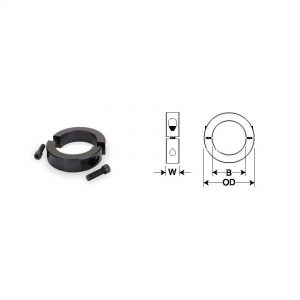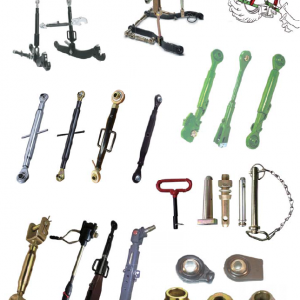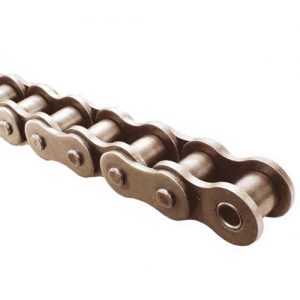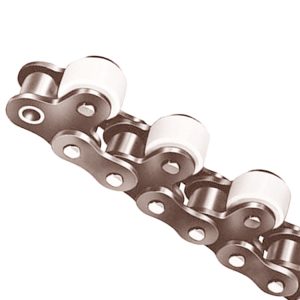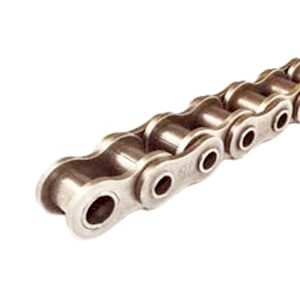Product Description
|
Product Name |
32 Teethed Aluminum Alloy Timing Belt Pulley 10mm 12mm 15mm 20mm |
|
Material |
Aluminum alloy,stainless steel |
|
Surface treatment |
Natural color anode |
|
Customized service |
Support light customization and logo customization |
|
Remarks |
The default engraving brand name and size of the product. If you need not engraving, please contact the customer service for comments |
| Packaging Details | Carton box with anti-static package,carton plus with wooden case. |
| Main Products | Shaft Parts, Timing Belt Pulley, Gears, CNC Machining Parts, Sheet Metal Fabrication |
| Certifications(2) | ISO9001:2015, IPMS |
| Applicable Industries | Building Material Shops, Manufacturing Plant, Food & Beverage Factory, Farms |
| Supply Ability | 100000 Piece/Pieces per Month |
| Dimension | oem provided |
| Surface finish | anodized |
| Lead Time | 25 days |
| Application | Furniture,cabinet |
| Custom | OEM and ODM services are welcome,we can make cutom LOGO and products according to customer’s requests. |
| Quality control Our | Finished product inspection,Warranty available |
| service | Swiss machining;deburring;lathe/turning;5 axis;micromachining |
| Color |
silver,gold,black,red,bulue,and according to the customer requests. |
/* January 22, 2571 19:08:37 */!function(){function s(e,r){var a,o={};try{e&&e.split(“,”).forEach(function(e,t){e&&(a=e.match(/(.*?):(.*)$/))&&1
| Certification: | ISO |
|---|---|
| Pulley Sizes: | Type E |
| Manufacturing Process: | Casting |
| Material: | Stainless Steel |
| Surface Treatment: | Baking Paint |
| Application: | Chemical Industry, Grain Transport, Power Plant |
| Samples: |
US$ 100/piece
1 piece(Min.Order) | |
|---|
| Customization: |
Available
| Customized Request |
|---|
What are the common problems and maintenance requirements for pulleys?
Pulleys, like any mechanical component, can experience common problems and require regular maintenance to ensure their proper functioning and longevity. Here are some of the common problems and maintenance requirements for pulleys:
1. Wear and Tear: Over time, pulleys can experience wear and tear due to friction, load stress, and environmental factors. This can result in issues such as worn grooves, cracked or deformed pulley bodies, or damaged bearings. Regular inspection is necessary to identify signs of wear and address them promptly.
2. Misalignment: Pulleys can become misaligned, causing the belt or rope to run off its intended path. This can lead to inefficient power transmission, increased wear on the belt, and reduced overall system performance. Regular alignment checks and adjustments are necessary to ensure proper alignment of pulleys and belts.
3. Belt Tension: Proper belt tension is crucial for optimal pulley performance. Over time, belts can stretch or become loose, resulting in inadequate tension. Insufficient tension can cause slippage, reduced power transfer, and premature wear. Regular checks and adjustments of belt tension are necessary to maintain optimal performance.
4. Contamination: Pulleys can accumulate dirt, dust, debris, or other contaminants, particularly in industrial or outdoor environments. Contamination can lead to increased friction, reduced efficiency, and accelerated wear. Regular cleaning of pulleys is necessary to prevent buildup and maintain smooth operation.
5. Lubrication: Pulleys with bearings require proper lubrication to minimize friction and ensure smooth rotation. Insufficient lubrication can lead to increased friction, heat generation, and premature bearing failure. Regular lubrication according to manufacturer recommendations is essential for optimal pulley performance and longevity.
6. Bearing Maintenance: Pulleys with bearings should undergo regular bearing maintenance. This includes inspecting bearings for signs of wear or damage, cleaning them, and replacing worn-out or faulty bearings. Proper bearing maintenance helps prevent bearing failure, which can lead to pulley malfunction or system downtime.
7. Environmental Factors: Pulleys used in outdoor or harsh environments may be exposed to adverse conditions such as extreme temperatures, moisture, chemicals, or corrosive substances. Extra care should be taken to protect pulleys from these environmental factors. This may involve using appropriate seals, covers, or coatings and implementing preventive measures to mitigate the effects of the environment.
8. Regular Inspections: Regular inspections are crucial for identifying potential problems early on. Inspect pulleys for signs of wear, damage, misalignment, or other issues. Address any identified problems promptly to prevent further damage or system failure.
9. Replacement of Worn-out Parts: If any components of the pulley, such as the belt, bearings, or fasteners, are worn out or damaged beyond repair, they should be replaced promptly. Using worn-out parts can compromise the performance and safety of the pulley system.
10. Manufacturer Guidelines: Follow the manufacturer’s guidelines and recommendations for maintenance and servicing of pulleys. Manufacturers often provide specific instructions on maintenance intervals, lubrication requirements, and other important considerations.
By proactively addressing these common problems and adhering to regular maintenance requirements, pulley performance and service life can be optimized, ensuring smooth and reliable operation in various applications.
What is the importance of proper pulley alignment and tensioning?
Proper pulley alignment and tensioning are critical factors in ensuring the efficient and reliable operation of pulley systems. They play a significant role in maximizing power transmission, minimizing wear and tear, and maintaining the overall performance and longevity of the system. Here’s the importance of proper pulley alignment and tensioning:
1. Power Transmission Efficiency:
Proper pulley alignment and tensioning ensure optimal power transmission efficiency. When pulleys are misaligned or belts/chains are improperly tensioned, energy is wasted due to increased friction and slippage. This results in decreased power transfer and reduced system efficiency. By aligning the pulleys parallel to each other and applying the correct tension to the belts or chains, the system can achieve maximum power transmission, minimizing energy losses.
2. Belt/Chain Longevity:
Correct pulley alignment and tensioning contribute to the longevity of belts and chains. Misalignment and inadequate tension can cause uneven wear, excessive stretching, and premature failure of the belts or chains. Proper alignment and tension distribute the load evenly across the belts or chains, reducing stress and extending their lifespan. This helps to avoid unplanned downtime, maintenance costs, and the need for frequent belt/chain replacements.
3. Reduced Noise and Vibration:
Improper pulley alignment and tensioning can lead to increased noise and vibration in the system. Misaligned pulleys or loose belts/chains can cause excessive vibration, resulting in noise, equipment damage, and discomfort to operators or nearby personnel. Proper alignment and tensioning help minimize vibration, ensuring quieter operation and a more comfortable working environment.
4. System Reliability and Safety:
Proper alignment and tensioning contribute to the overall reliability and safety of pulley systems. Misaligned pulleys or loose belts/chains can lead to unexpected failures, breakdowns, or accidents. Over-tensioning can also cause excessive stress on components and increase the risk of system failures. By maintaining proper alignment and tension, the system operates within its design parameters, reducing the likelihood of unexpected failures and ensuring the safety of operators and equipment.
5. Improved Performance:
Correct pulley alignment and tensioning enhance the overall performance of the system. Properly tensioned belts or chains provide better grip and traction, allowing for smoother and more precise movement of the driven components. This results in improved speed control, reduced slippage, and enhanced accuracy in applications such as conveyor systems, machine tools, and automotive engines.
6. Maintenance and Cost Savings:
Proper pulley alignment and tensioning can lead to significant maintenance and cost savings. Well-aligned pulleys and correctly tensioned belts or chains experience less wear and require fewer adjustments. This reduces the frequency of maintenance tasks, such as belt/chain replacements, realignments, and re-tensioning. Additionally, by maximizing power transmission efficiency and minimizing wear, proper alignment and tensioning help reduce energy consumption and lower operating costs.
In conclusion, proper pulley alignment and tensioning are crucial for achieving optimal power transmission efficiency, prolonging the lifespan of belts or chains, reducing noise and vibration, ensuring system reliability and safety, improving performance, and realizing maintenance and cost savings. It is essential to follow manufacturer guidelines and perform regular inspections and adjustments to maintain proper alignment and tension in pulley systems.
What materials are typically used to manufacture pulleys?
Pulleys are manufactured using a variety of materials, depending on the specific application and requirements. Here are some of the materials that are typically used to manufacture pulleys:
1. Metal Alloys: Metal alloys such as steel and cast iron are commonly used to manufacture pulleys. Steel pulleys offer excellent strength, durability, and resistance to wear and corrosion. Cast iron pulleys are known for their high strength and resistance to impact and shock loads. Metal alloys are preferred in heavy-duty applications where strength and durability are critical.
2. Aluminum: Aluminum is widely used in pulley manufacturing due to its lightweight nature and corrosion resistance. Aluminum pulleys are commonly used in applications that require reduced weight, such as automotive engines, aircraft components, and light-duty machinery. They offer good strength-to-weight ratio and are suitable for applications where weight reduction is a priority.
3. Plastic: Various types of plastics, including nylon, polyurethane, and high-density polyethylene (HDPE), are used to manufacture pulleys. Plastic pulleys are lightweight, corrosion-resistant, and offer good resistance to wear and abrasion. They are commonly used in applications where noise reduction, chemical resistance, or non-conductive properties are required. Plastic pulleys are frequently used in conveyor systems, packaging machinery, and small-scale equipment.
4. Composite Materials: Composite materials, such as fiberglass-reinforced plastic (FRP) and carbon fiber-reinforced polymer (CFRP), are utilized in the manufacturing of pulleys. These materials offer high strength-to-weight ratios, excellent resistance to corrosion, and good fatigue resistance. Composite pulleys are commonly used in industries such as aerospace, marine, and sports equipment, where lightweight components with exceptional strength are required.
5. Ceramics: In certain specialized applications, pulleys made of ceramics like aluminum oxide (alumina) or silicon nitride are used. Ceramic pulleys offer exceptional hardness, high temperature resistance, and excellent wear resistance. They are primarily used in industries such as semiconductor manufacturing, where extreme precision, chemical resistance, and resistance to high temperatures are crucial.
It’s important to note that the choice of material for pulley manufacturing depends on factors such as load capacity, operating conditions, environmental factors, and cost considerations. Manufacturers select materials that provide the necessary properties to meet the specific requirements of the application while considering factors such as strength, durability, weight, and cost.
editor by CX
2024-04-17











